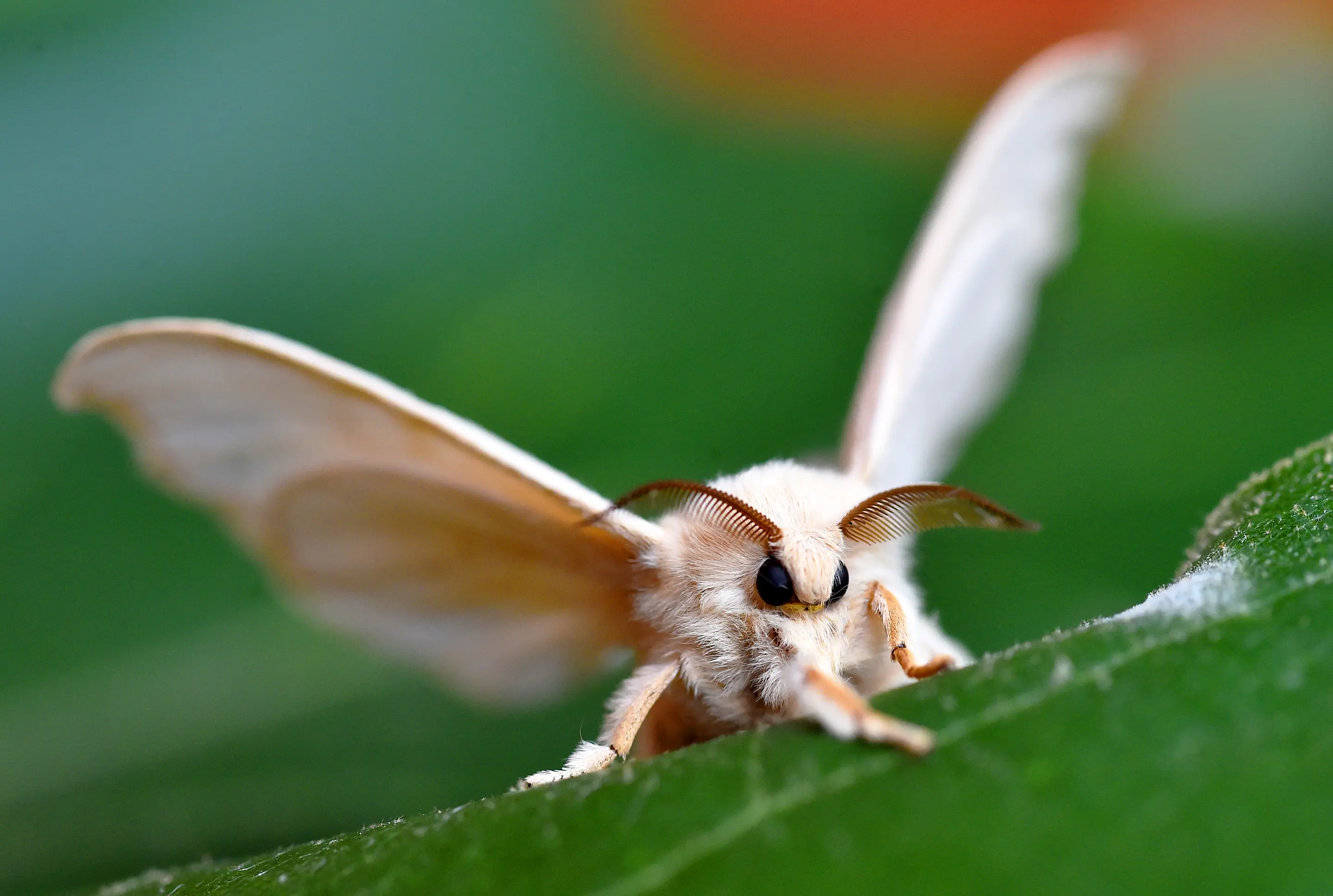
When it comes to the fascinating world of insects, moths often take a backseat to their more popular cousin, the butterfly. However, these nocturnal creatures have their own unique charm and allure. With their intricate patterns and elusive behavior, moths have captured the curiosity of both scientists and nature enthusiasts alike.
In this article, we will explore 15 fascinating facts about moths that will leave you with a newfound appreciation for these often overlooked insects. From their diverse shapes and sizes to their remarkable survival strategies, moths have plenty of surprises up their delicate wings.
So, get ready to shed some light on the world of moths as we delve into their extraordinary characteristics and unravel the mysteries that make them truly remarkable creatures.
Key Takeaways:
- Moths have been around for millions of years and come in various sizes, playing a vital role in pollination and ecosystems. They are fascinating creatures with unique adaptations and important ecological contributions.
- Despite their nocturnal nature and attraction to light, moths are essential pollinators and food sources in ecosystems. They have diverse adaptations and play a crucial role in the natural world.
Moths are ancient insects
Did you know that moths have existed for millions of years? Fossil evidence shows that moths have been around for at least 190 million years, making them one of the most ancient insect groups on Earth.
Diversity of moths
There are approximately 160,000 known species of moths worldwide, and scientists estimate that there could be as many as 500,000 moth species yet to be discovered. This vast diversity makes moths one of the most diverse groups of insects.
Moths come in various sizes
From the tiny and delicate pygmy moths, which can have a wingspan of just a few millimeters, to the majestic Atlas moth with a wingspan of up to 30 centimeters, moths come in a wide range of sizes.
Nocturnal creatures
The majority of moths are nocturnal, meaning they are most active during the night. They have evolved various adaptations to navigate and find their way in the darkness, such as their keen sense of smell and the ability to detect ultraviolet light.
Important pollinators
Contrary to popular belief, moths play a vital role in pollination. They are especially important in pollinating night-blooming flowers, which rely on moths to transfer pollen from one flower to another.
Silk production
Moths are famous for their silk production. The silkworm moth, in particular, is responsible for spinning silk cocoons. The silk threads are used to create textiles and are highly valued for their strength and softness.
Camouflage experts
Moths have evolved incredible camouflage abilities. Their coloring and patterns often allow them to blend seamlessly into their surroundings, making them difficult for predators to spot.
Extraordinary antennae
Moths have unique and intricate antennae that come in various shapes, sizes, and patterns. These antennae are not only used for scent detection but also play a crucial role in communication and mating rituals.
Moths and bat sonar
Some species of moths have developed fascinating defensive mechanisms against predators like bats. These moths can detect echolocation signals emitted by bats and perform evasive flight patterns to avoid being caught.
Mysterious moth flights
Moths have been known to undergo long-distance migrations, although the exact mechanisms guiding their journeys are still not fully understood. These migrations can span hundreds or even thousands of kilometers.
A variety of habitats
Moths can be found in almost every habitat worldwide, except for the polar regions. They have adapted to thrive in diverse environments, from deserts and mountains to forests and urban areas.
Impressive lifespan
The lifespan of moths varies greatly depending on the species. While some moths only live for a few days as adults, others can survive for several months.
Moth symbolism
In many cultures, moths are associated with symbolism and folklore. They are often seen as symbols of transformation, mystery, and spirituality.
Ecological importance
Moths play a vital role in ecosystems as a food source for other animals, including bats, birds, and small mammals. They also contribute to nutrient recycling and plant pollination.
Moth misconceptions
Despite their beneficial contributions to nature, moths often face negativity and misconceptions due to their attraction to artificial lights. However, moths have important ecological roles and deserve our appreciation.
In conclusion,
These 15 facts about moths highlight the incredible diversity, adaptations, and ecological importance of these often misunderstood creatures. From their ancient origins to their essential roles as pollinators and food sources, moths are a fascinating part of the natural world.
Conclusion
Moths, with their fascinating life cycles, diversity of species, and unique adaptations, are truly remarkable creatures. From their ability to navigate using celestial cues to their role as important pollinators, moths play an integral part in ecosystems around the world. With their delicate wings and intricate patterns, they have captivated the attention of scientists, artists, and nature enthusiasts alike.As we’ve explored these 15 facts about moths, we’ve gained a deeper appreciation for their incredible abilities and contributions to the natural world. Whether they are blending in with their surroundings, communicating with pheromones, or undergoing an amazing transformation from caterpillar to adult, moths continue to amaze us with their beauty and resilience.So the next time you see a moth flutter by your porch light or dance through a moonlit night, take a moment to marvel at the wonder of these creatures. Moths may be often overshadowed by their butterfly relatives, but they are a true testament to the complexity and diversity of the animal kingdom.
FAQs
Q: Are moths harmful to humans?
A: In general, moths are harmless to humans. While some moth larvae can cause damage to fabrics and stored goods, most adult moths do not pose any direct harm to humans.
Q: Do all moths eat clothing?
A: No, not all moths eat clothing. The ones that do are typically certain species of clothes moths, whose larvae feed on natural fibers such as wool, fur, and silk. Most moths, however, have different feeding habits and do not cause damage to clothing.
Q: Are moths attracted to light?
A: Yes, many moth species are attracted to light. This behavior is known as positive phototaxis. Moths often navigate by using the moon as a reference point, and artificial lights can confuse them, leading them to fly towards sources of light.
Q: Do moths have any predators?
A: Yes, moths have several predators, including birds, bats, spiders, and certain insects. These predators play an important role in controlling moth populations and maintaining the balance of ecosystems.
Q: How long do moths live?
A: The lifespan of a moth can vary greatly depending on the species. Some adult moths may live for only a few days or weeks, while others can survive for several months.
After learning about moths' incredible diversity and ecological importance, you might be curious to explore more fascinating aspects of these intriguing insects. Delve into the captivating world of moth orchids and their unique relationship with moths. Discover the mesmerizing beauty and interesting characteristics of elephant hawk moths, which are sure to leave you in awe. Finally, set sail on an exciting adventure as you uncover the thrilling sport of moth sailing and its rich history. Each topic offers a wealth of knowledge and surprises that will keep you engaged and eager to learn more about the wonderful world of moths.
Was this page helpful?
Our commitment to delivering trustworthy and engaging content is at the heart of what we do. Each fact on our site is contributed by real users like you, bringing a wealth of diverse insights and information. To ensure the highest standards of accuracy and reliability, our dedicated editors meticulously review each submission. This process guarantees that the facts we share are not only fascinating but also credible. Trust in our commitment to quality and authenticity as you explore and learn with us.


